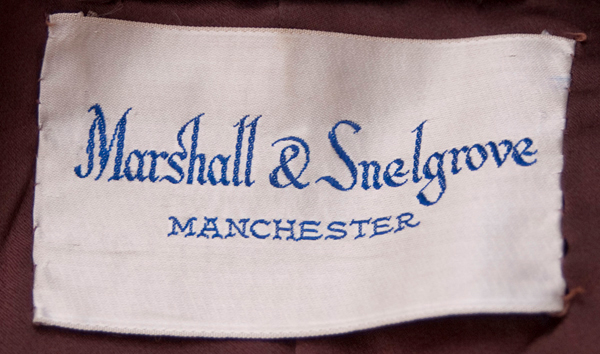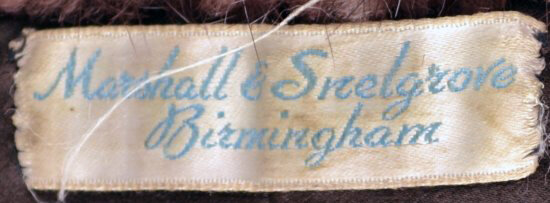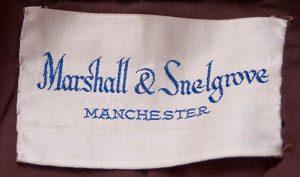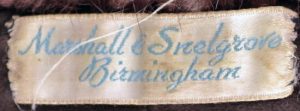Marshall & Snelgrove were garment and textile retailers of distinction in London and elsewhere for over a hundred years. John Snelgrove set up his first business in 1838. In 1848 he was joined in partnership by James Marshall who already maintained a drapery business in Yorkshire and in Vere Street, London (first Marshall & Wilson, then Marshall, Wilson and Stinton).
They quickly became a highly-regarded business and occupied a palatial new premises at 334-348 Oxford Street (bought in 1851) that was completed in three years, by 1878, although the Vere Street branch was maintained for some time.
Marshall and Snelgrove cultivated an air of exclusivity by maintaining an on-site couturier workroom to supplement their ready-to-wear lines. A prestigious position as apprentice in the store could only be secured with a deposit of 60 guineas.
One of the founder’s sons, James C. Marshall, expanded the business by opening branches across the North and North Midlands of England (Scarborough, Harrogate, Birmingham, Manchester, Southport, Leicester, Leeds, York, Sheffield and Bradford).
The first world war hit the firm badly. It was supported through emergency measures from 1916 and in 1919 merged with Debenham and Freebody (q.v.). Ownership of Marshall and Snelgrove continued to mean more in prestige than money to Debenhams for the next forty years.
Some branches were closed in the 1960s and the old Victorian flagship block was demolished and rebuilt. The calculated strengthening of the brand name of the parent company meant that all Marshall and Snelgrove stores became ‘Debenhams’ in 1973.
Written by vintage-voyager.com







